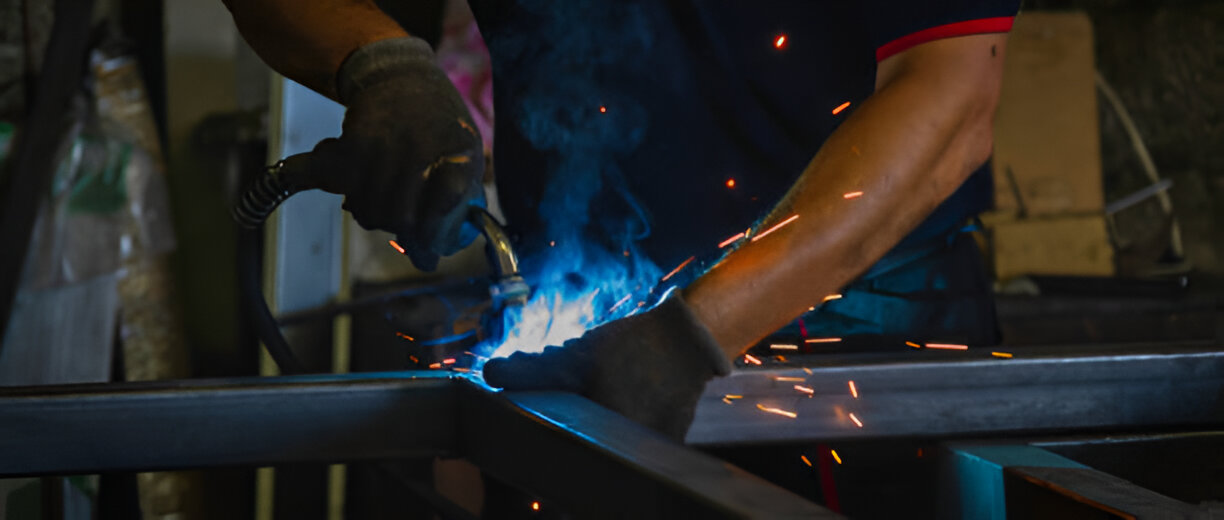Welding workshop is going through the fourth industrial revolution characterized by emergence of new technologies that are revolutionizing safety, efficiency and employment in welding industries. Such progress in the field leads to better methods as well as tools that are more efficient and that improve the safety of employees. One of the ways in which the welding industry is addressing modern needs is through incorporating automation technology additional regarding artificial intelligence and eco-friendly technological innovation.
These technologies also allow the welders to perform these intricate operations of fabrication in a more precise manner, improvement in utilization of materials in a way that is primarily efficient and secondly, the act of using these technologies contribute down to the protection of the environment. Further, welding workshops create potential for modern professions’ development since such specialists receive the opportunity to improve their knowledge and skills. However, to satisfy growing demands regarding construction and facilities in the construction and manufacturing industries, it has become crucial to adapt to these innovations. The kind of change illustrated here underlines the need to apply best practice approaches to support sustained positive advancement of the welding workshop profession
The Best Technologies Transforming Welding
Several groundbreaking technologies are making waves in the welding industry:
- Robotic Welding and Automation
- Laser Welding
- Friction Stir Welding (FSW)
- Augmented and Virtual Reality (AR/VR) Training
- Advanced Personal Protective Equipment (PPE)
- Sustainable Welding Practices

Why Are These Technologies Necessary?
New trends are developing in the welding industry due to the constant trends in rise of demands for higher accuracy, increased rate of production, and environmental conscious trends. These technologies address critical challenges such as:
Quality Control: Achieving efficient, high-quality welds in all uses of the machines.
Safety: Reducing the danger to workers by making high-risk processes robotic and presenting improved Personal Protective Equipment.
Sustainability: The practical organizational changes concerned eco-sustainability, trying to minimize waste and energy consumption.
By adopting these technologies, companies can continue to be viable and churn out products that satisfy the high set quality standards
Improving Safety in the Welding Industry
Safety is a top priority in welding, and these technologies are making significant strides in protecting workers:
Robotic Welding: Reduces people’s exposure to hazardous situations by performing perilous operations mechanically.
AR/VR Training: Creates an easy environment for the trainees to practice the kind and types of welds without exposure to the real risks.
Advanced PPE: Stands out as one of the best when it comes to thermal insulation, flame and toxic products’ protection.
Sustainable Practices: Cuts emissions of toxic materials by using less toxic and environmentally friendly technology.
These developments lead to enhanced work environments free from troubles, mishaps and diseases common with conventional welding practices.
The Benefits of Advanced Welding Technologies
The adoption of modern welding technologies offers numerous advantages, including:
Higher Productivity: Faster methods and properly controlled automated procedures enhance the rates of production without efficiency being affected.
Cost Savings: Le, Hong and Tian (2011, p.327) established that there is a positive relationship between effective processes at the workplace and reduced wastage, implying that costly operations will be minimized.
Versatility: New technologies can work with more diverse materials and in more fields as well.
Environmental Responsibility: Energy saving and waste minimization initiatives fall in line with the sustainable development goals.
Enhanced Training: AR/VR tools enhance skill enhancement procedures which means that it will not take long for people who want to be employed in this field to be employed.
Due to these benefits, advanced welding technologies are worth employing in organizations and for experts into welding.
Career Growth in the Welding Industry
For professionals, mastering advanced welding technologies can lead to significant career growth:
Skill Development: This means that employability is boosted whenever an individual learns how to operate and maintain new systems.
Higher Salaries: Specifically, professionals with rich experience in the new generation technologies are on offer.
Diverse Opportunities: There is the ability to work in new fields such as aerospace welding, automobile welding for renewable power among others.
Leadership Roles: Their application can result in a supervisory or manager position depending on the amount of knowledge of the technologies.
Welding training on the most up-to-date techniques and welding certifications can help aspiring welders find great job opportunities.
Transforming the Industry
Introduction of latest technologies is remodeling the concept of welding. These innovations are proving faster and safer ways of working while also offering enhanced and efficient ways of working; environmentally friendly advances that are putting standards for excellence into practice. They can help companies churn out higher-quality goods more quickly and do so safely for employees and in a way that is kinder to the planet.
WRAPPING IT UP
It is also already on the trajectory of a technological disruption. Adapting to such technologies and techniques is not only necessary to keep up with competitors but also to have a safer living environment in the future. To the professionals, it becomes the way in which they upgrade their skills and become standard bearers in an emerging discipline. With this mercury, the welding industry can achieve greater heights, thus creating positive impacts in businesses, the welders and society.

